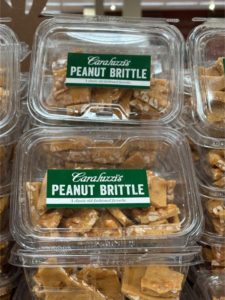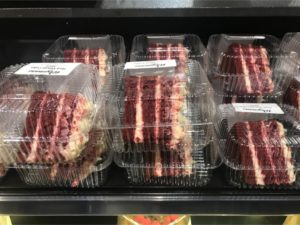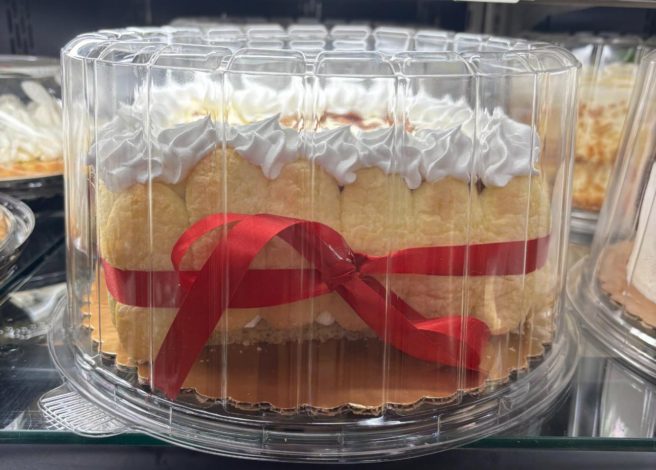“It doesn’t fit on the shelf, but I’m going to make it fit,” are famous last words that a business owner in the food industry never wants to hear. It is usually followed by a crashing sound, shocked faces, and a mess that resembles a cafeteria after a food fight. In the competitive retail landscape, incorrect fresh food packaging dimensions can be a costly mistake, impacting your entire operation. While choosing containers might seem like a straightforward decision, the wrong choice can lead to substantial revenue loss, damaged products, and unhappy customers.
There is a lot to know about choosing the correct dimensions, beyond simply “Does it fit?” With over 55 years in the industry, we at Inline Plastics have helped businesses just like yours find the right size and shape packaging for the application.
In this article, we will explain what you should consider when ordering specific packaging dimensions. Understanding these nuances can give your business a significant competitive advantage and hopefully lead to fewer messes in your aisles.
Maximizing Shelf Space Value
 Let’s talk real estate — retail shelf real estate that is. And just like choosing between a cozy round house or a practical square apartment, your packaging choice can make or break your shelf space strategy. Square and rectangular containers might appear to be a great option for utilizing as much space as possible, but don’t count those round containers out just yet — they’ve got their own moment to shine. After all, nobody ever said, “Life is like a square box of chocolates.”
Let’s talk real estate — retail shelf real estate that is. And just like choosing between a cozy round house or a practical square apartment, your packaging choice can make or break your shelf space strategy. Square and rectangular containers might appear to be a great option for utilizing as much space as possible, but don’t count those round containers out just yet — they’ve got their own moment to shine. After all, nobody ever said, “Life is like a square box of chocolates.”
Each shape brings something special to the table (literally, in some cases). The million-dollar question isn’t which shape is best, but rather: What’s your endgame? Are you playing Tetris with shelf space? Trying to make your product look like it belongs in a food magazine? Or maybe you just want customers to be able to eat straight from the container without looking like they’re wrestling with a puzzle box. Your answers will point you toward your packaging soulmate.
Another consideration in your display strategy is whether or not the products will be stacked on the shelf. If so, how high? The containers need to be able to stack atop each other while maintaining the structural integrity to hold multiple packages above and below. If the package is made from thin materials, it may not be able to handle the weight of multiple products on top of it…leading to a tumbling tower of food.
While trends shift between shapes, like cut fruit moving from rectangles to bowls for that fresh-from-the-kitchen feel, some products have traditional expectations like soups in round containers (have you really ever seen one in a rectangular package?).
The Hidden Dangers to Food Quality and Shelf Life
 Regarding shelf life, your package’s size and shape can make all the difference on how the food reacts in the container environment. Will it stay fresher longer or spoil faster? Different foods have particular ideas about their ideal home: croissants are the free spirits that need room to breathe, and cheeses prefer the cozy security of a well-sealed container.
Regarding shelf life, your package’s size and shape can make all the difference on how the food reacts in the container environment. Will it stay fresher longer or spoil faster? Different foods have particular ideas about their ideal home: croissants are the free spirits that need room to breathe, and cheeses prefer the cozy security of a well-sealed container.
Size matters: larger produce cuts can actually stay fresh longer than their diced cousins because there is less surface area that can oxidize. While the wrong container height can turn your bottom layer into a game of food Jenga gone wrong.
The key is finding that sweet spot between protection and preservation: enough space to keep things fresh but not so much that you’re paying for air. After all, the goal isn’t just to package your food: it’s give it the best presentation possible and the best chance at a long shelf life.
Automation Nightmares and Operational Bottlenecks
Your food packaging dimension choice can make the difference between a smooth operation and a production puzzle. The key is matching your package to your process. Some container shapes glide through the system for automated lines, while others might throw your robots into a tizzy. Simple solutions often win the race for manual operations: clamshell containers can be very efficient for items like cut fruit, letting your team snap on lids at record speed instead of fiddling with hinged options.
The best approach? Take your packaging for a test drive before committing to the whole fleet. Small-batch trials can reveal potential headaches before they become production migraines, saving you from costly adjustments down the line.
Consider practical details like label placement and stackability, ensuring your packaging works from the production line to a customer’s table. The right choice protects your product, pleases your customers, and grows with your business.
The Costly Impact of Short-Sighted Design
 Failing to consider future needs in packaging selection can force expensive mid-year changes. Just like bakeries who don’t plan for holiday decorations atop frosty cupcakes may find themselves scrambling for those ingredients, the same will go for packaging during peak seasons. Retailers who don’t consider seasonal promotions or changing food packaging dimensions often face the choice between limiting their offerings or managing multiple packaging types — both costly compromises.
Failing to consider future needs in packaging selection can force expensive mid-year changes. Just like bakeries who don’t plan for holiday decorations atop frosty cupcakes may find themselves scrambling for those ingredients, the same will go for packaging during peak seasons. Retailers who don’t consider seasonal promotions or changing food packaging dimensions often face the choice between limiting their offerings or managing multiple packaging types — both costly compromises.
Package Positioning
The retail food world is a bit like fashion: trends come and go, and packaging shapes are no exception. One year, everyone will be all about squares and rectangles for their cut fruit. The next? Round bowls may be having their moment in the spotlight.
It’s not just about looking pretty on the shelf (though that certainly helps) — it’s about how your packaging makes customers feel when they get it home. A container that looks right at home on a dinner table might win hearts over one that screams “straight from the stockroom,” even if both do the job.
Here’s the thing: there’s no one-size-fits-all solution for food packaging dimensions. What works for fruit might flop for sandwiches, and today’s hot trend might be tomorrow’s old news. The key is staying tuned to your market while keeping your product’s practical needs in mind.
In the competitive food processor market, distinctive packaging is essential. Your product’s presentation should maximize visual appeal and convey premium quality to stand out among competitors. A more attractive display of your product will lead to faster and increased sales. This will result in less waste and more profits in your margins. Behold the magic of good packaging! Here, beauty isn’t skin deep: it’s the whole package!
Getting Into Shape
 Size and shape are the secret ingredients to success. A few millimeters can transform everything from shelf appeal to production efficiency. Too tall? You risk product damage. Too wide? You’re wasting valuable shelf space. Too snug? You might not have room for seasonal variations.
Size and shape are the secret ingredients to success. A few millimeters can transform everything from shelf appeal to production efficiency. Too tall? You risk product damage. Too wide? You’re wasting valuable shelf space. Too snug? You might not have room for seasonal variations.
Finding that perfect balance of food packaging dimensions isn’t just about today’s needs; it’s about giving your product room to shine through every step of its journey. And remember, you don’t have to crack this code alone — that’s what packaging experts (like us) are for.
Finding the right fit for you is our priority, whether that’s Inline Plastics’ solutions or another option entirely. Questions? We’re always here to help.”


